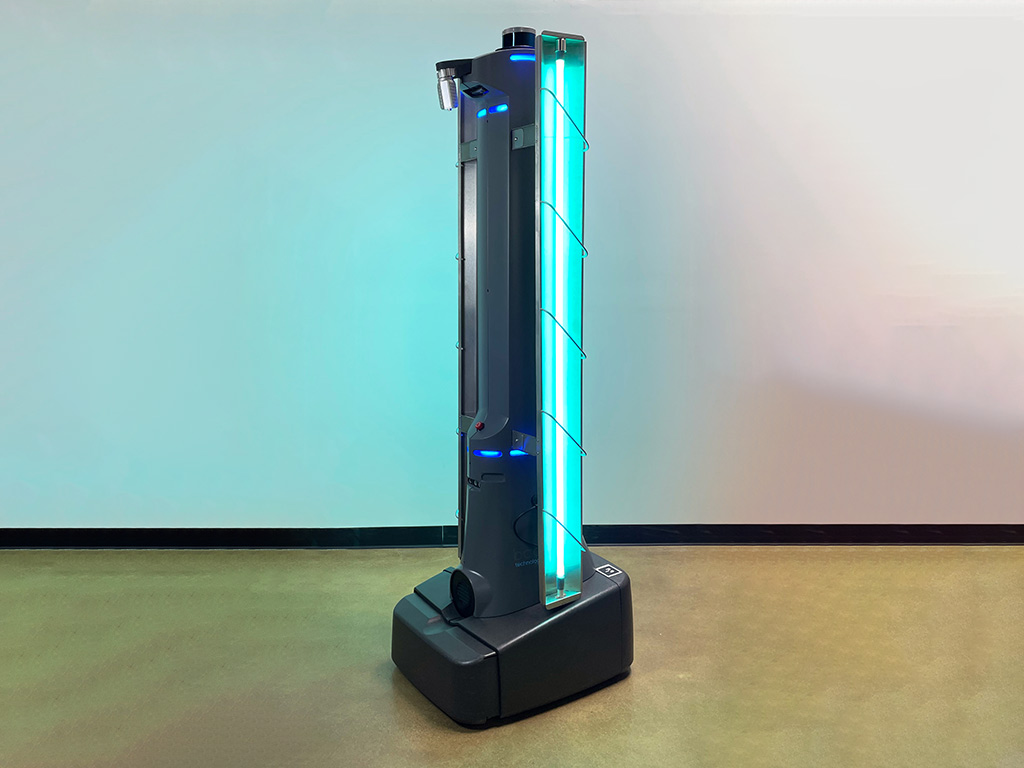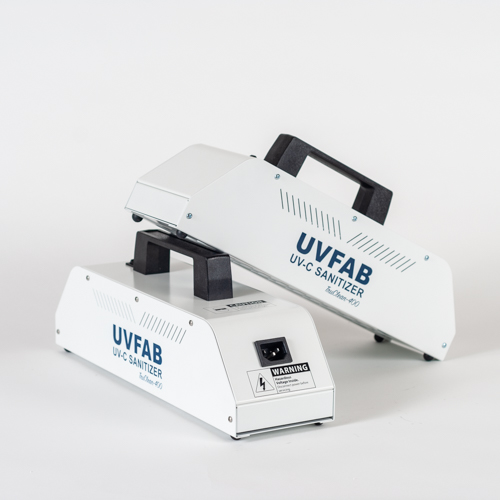Introducing the Advantages of UV Sanitation: Making Sure Tidy and Sanitized Rooms
While standard cleaning methods have actually long been relied upon, innovations in technology have actually introduced a cutting-edge service that ensures clean and sanitized rooms: UV sanitation. In addition, we will dive into the safety factors to consider that must be taken right into account when applying UV disinfection. Prepare to discover a new measurement of cleanliness and uncover the untapped potential of UV disinfection.

The Scientific Research Behind UV Sanitation
UV disinfection is a scientifically tried and tested technique that utilizes ultraviolet light to eliminate unsafe microbes from surface areas and water. The science behind UV sanitation depends on the ability of UV-C light to damage the DNA and RNA of microorganisms, providing them unable to reproduce and creating their ultimate fatality. UV-C light falls within the wavelength variety of 200 to 280 nanometers, which is highly effective in destroying microorganisms, infections, and various other microorganisms.
When exposed to UV-C light, the genetic material of microorganisms soaks up the power from the light, bring about the development of thymine dimers. These dimers interfere with the regular duplication and transcription procedures of the bacteria, hindering their ability to endure and duplicate (uv surface disinfection). The DNA and RNA damages caused by UV-C light is dangerous to the microbes, making UV sanitation a effective and reputable technique for eliminating a large range of virus
UV disinfection is especially beneficial in settings where typical chemical anti-bacterials might be impractical or inadequate. It is a non-chemical technique that does not leave any deposits or hazardous spin-offs, making it risk-free for usage in food processing, healthcare centers, water therapy plants, and various other industries. Furthermore, UV sanitation is eco-friendly, as it does not add to the advancement of antibiotic-resistant germs or various other dangerous contaminants.
Efficiency of UV Sanitation on Microorganisms
The efficiency of UV sanitation in removing virus has actually been extensively researched and shown in various clinical research studies. UV radiation has the ability to inactivate a wide variety of microorganisms, including fungis, bacteria, and viruses, by damaging their DNA or RNA. This avoids them from reproducing and triggering infections.
One research study published in the American Journal of Infection Control located that UV sanitation worked in lowering the visibility of several drug-resistant germs in medical facility areas. One more study conducted by the National Institute for Occupational Safety and Health showed that UV sanitation was able to eliminate 99.9% of the flu infection on surface areas.
UV disinfection has likewise shown promise in combating the spread of healthcare-associated infections (HAIs) According to a research study released in The Lancet, using UV-C light along with typical cleaning procedures substantially decreased the incidence of HAIs in a health center setting.
Furthermore, UV sanitation has actually proven to be efficient against emerging microorganisms, such as the extreme intense respiratory syndrome coronavirus 2 (SARS-CoV-2), which triggers COVID-19. A research study performed by the National Arising Transmittable Illness Laboratories showed that UV-C light can inactivate the virus on surfaces within secs.
Applications of UV Sanitation in Various Setups
With its proven effectiveness in getting rid of microorganisms, UV sanitation has found applications in a variety of setups. One of one of the most usual areas where UV sanitation is made use of remains in health care centers. UV innovation is used to sanitize individual areas, running areas, and various other high-touch surface areas, minimizing the risk of healthcare-associated infections. On top of that, UV disinfection is additionally being executed in food handling plants and restaurants to ensure the security of food products and prevent the spread of foodborne illnesses. UV sanitation is likewise beneficial in water therapy plants, where it is utilized to kill harmful microorganisms and provide secure alcohol consumption water.
An additional important application of UV disinfection impends filtration sector. UV air purifiers are made use of in residential, business, and industrial setups to remove air-borne microorganisms, infections, and mold and mildew spores. This technology is particularly valuable in environments where individuals are a lot more at risk to breathing infections, such as health centers, colleges, and office complex.
Furthermore, UV disinfection is progressively being used in public transport systems, such as trains and buses, to keep tidy and sterilized spaces for travelers. UV light is employed to disinfect surface areas and air inside the automobiles, reducing the risk of spreading contagious conditions.
Benefits of UV Disinfection Over Standard Techniques
In comparison to traditional techniques, UV disinfection offers a variety of distinct advantages that make it a preferable choice in various sectors and settings. One significant advantage is its efficiency against a broad range of microbes, including viruses, microorganisms, and fungi. Unlike chemical anti-bacterials that may have limited effectiveness versus specific pathogens, UV sanitation is a non-selective process that can eliminate or suspend a wide range of hazardous organisms.
One more advantage of UV disinfection is its capability to offer effective and rapid disinfection. Conventional disinfection techniques commonly read the article call for longer call times or several steps to accomplish the desired level of sanitation. On the other hand, UV light can give prompt and continual disinfection, reducing downtime and increasing performance in numerous applications.
UV sanitation also offers a safe and eco pleasant choice to typical sanitation techniques. uv surface disinfection. Unlike chemical agents, UV light does not leave any type of damaging residues or byproducts, making it appropriate for use in delicate atmospheres such as food processing centers, health care settings, and water therapy plants
Moreover, UV disinfection is a cost-efficient solution over time. While the ahead of time investment for UV disinfection systems may be more than typical methods, the operational costs are typically lower. UV lamps have a lengthy life expectancy and call for marginal upkeep, resulting in lowered labor and substitute costs.
Safety And Security Factors To Consider for UV Disinfection
Considering the prospective dangers related to UV sanitation, it is necessary to address the security considerations associated with executing this innovation. UV disinfection makes use of ultraviolet light to kill or inactivate microorganisms, making it an efficient approach for sanitizing different surface areas and things. It is essential to understand that UV radiation can also pose risks to human health and wellness if appropriate safety and security steps are not adhered to.
Most importantly, direct exposure to UV radiation can create injury to the skin and eyes. Long term exposure can cause sunburn, skin damage, and also an increased risk of creating skin cancer cells. It is crucial to guarantee that UV sanitation systems are appropriately confined and furnished with safety and security features you could try this out such as automated shut-off systems or movement sensing units to avoid accidental direct exposure.

Additionally, appropriate training and education are essential for those accountable for operating UV sanitation systems. They should be mindful of the possible threats, comprehend the security procedures, and know how to deal with and keep the devices properly.
Verdict
Finally, UV disinfection supplies various benefits in making certain clean and sanitized rooms. Its effectiveness in getting rid of pathogens has been verified with scientific research study. UV sanitation can be used in numerous settings, including health care centers, food processing plants, and water therapy systems. Compared to typical approaches, UV sanitation has benefits such as faster sanitation times, very little chemical usage, and no damaging byproducts. Security factors to consider have to be taken right into account to stop prospective risks connected with UV exposure.
UV disinfection is a scientifically tested approach that utilizes ultraviolet light to remove harmful bacteria from surfaces and water. The DNA and RNA damages triggered by UV-C light is deadly to the bacteria, making UV disinfection a effective and trustworthy method for eliminating a broad range of pathogens.
One more advantage of UV disinfection is its capability to provide effective and rapid disinfection. UV sanitation utilizes ultraviolet light to kill or suspend bacteria, making it a reliable method for disinfecting various look at this website surfaces and objects. Compared to traditional techniques, UV disinfection has advantages such as faster disinfection times, marginal chemical use, and no dangerous by-products.